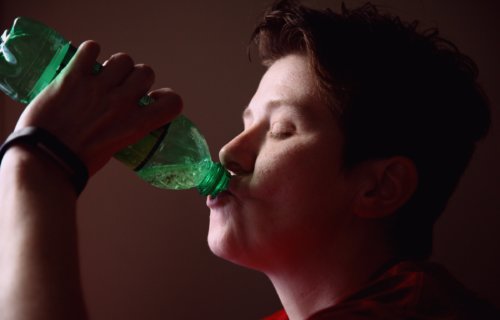SAN DIEGO, Calif. — Go to any grocery store in America and you’re likely to stand in the checkout line behind a shopping cart filled with sugary cereals, soft drinks, and pastries. These processed foods are affordable and tasty because they are sweetened with inexpensive high fructose corn syrup. Unfortunately, a study finds these inexpensive eating habits are making people sick. Researchers say consuming too much fructose can cause fat to build up around the organs, leading to a condition called non-alcoholic fatty liver disease (NAFLD).
A team from the University of California, San Diego recently made a surprising discovery. They say a leaky gut seems to be required for NAFLD to develop. Study authors suggest that protecting the gut could actually prevent liver damage.
“NAFLD is the most common cause of chronic liver disease in the world. It can progress to more serious conditions, such as cirrhosis, liver cancer, liver failure and death,” says senior author Michael Karin, PhD, Distinguished Professor of Pharmacology and Pathology at UC San Diego School of Medicine, in a university release. “These findings point to an approach that could prevent liver damage from occurring in the first place.”
Along with gut trouble, studies find fructose consumption has a connection to several chronic diseases, including heart disease and cancer.
Trouble brewing in the intestines from fructose
Once fructose is consumed, perhaps in the form of tasty treat or drink, it is digested in the intestines by an enzyme called fructokinase. The UCSD scientists carefully studied this process in mice. They fed mice high amounts of fructose or a combination of both fructose and fat.
In both cases, fructose metabolism blocked proteins that protect the intestines. This caused a “leaky gut,” allowing toxins to escape into the bloodstream. When those toxins reached the liver, they caused inflammation and fat deposits to grow. In other words, the mice developed NAFLD.
The mice experienced even more severe disease when fed high levels of both fructose and fat; typical ingredients in the “Western” diet. On the other hand, their livers remained healthy when the amount of fructose they ate was kept to a minimum. These readings are more in line with the amount of fructose a person might get from eating fruit.
“It is very clear that fructose does its dirty work in the intestine, and if intestinal barrier deterioration is prevented, the fructose does little harm to the liver,” Karin adds.
While it might be too late for those already suffering from NAFLD, researchers believe these findings offer some hope for a future therapeutic.
These findings are published in the journal Nature Metabolism.
